
Though she’s not generally counted among the canon of horror’s distinguished performers, perhaps none can boast a more sprawling and diverse corpus than Carla Gugino. For well over two decades now, the actress has been a prominent—if not always duly appreciated—presence in genre cinema, from Sin City (2005) to Watchmen (2009) to Sucker Punch (2011) and, more recently, Elizabeth Harvest (2018) and Lisa Frankenstein (2024). Gugino has appeared in some of the era’s most rewatchable cult classics, and her characters have emerged memorably each time.
After starting out as an early teen, she won roles in hit ’80s television series Saved by the Bell and The Wonder Years, before she transitioned into empowered, spirited characters she is now best known for. Gugino was just 27 years old when she played Ingrid Cortez—mother to a 12-year-old and a 9-year-old—in the Spy Kids trilogy. From the beginning, she possessed a natural elegance and poise, graced with an ethereality that made her so perfect for the dark, Gothic thrillers she, perhaps, intuitively gravitated toward.
In fact, Gugino was already primed to go down as one of the most storied actresses in the modern genre even before she first collaborated with filmmaker Mike Flanagan on Gerald’s Game (2017), based on Stephen King’s famously “unfilmable” novel, given that the central character Jessie played by Gugino spends most of the story handcuffed to a bed. Since then, Gugino and Flanagan have worked on four more projects—all triumphs—including the Netflix series The Haunting of Hill House (2018), The Haunting of Bly Manor (2020), The Fall of the House of Usher (2023)—and her wonderfully bewitching voice in Midnight Mass (2021). Gugino’s partnership with Flanagan has provided a showcase for her natural versatility and garnered the actress long-deserved accolades. She is certainly someone you stop dead to listen to any time she speaks.

What was your relationship to horror cinema growing up?
Well, it’s interesting that I’ve ended up doing my most gratifying work in that genre of late because it wasn’t anything that I was obsessed with as a kid. It wasn’t, for example, until I did Watchmen that I really had an appreciation for the graphic novel in a different way. One thing I will say is that The Shining [1980] is one of my all-time favorite movies. It blew me away when I saw it. It’s funny now having done a Stephen King adaptation, since I know that he famously does not like that incarnation of the movie. That being said, for me it was revelatory. Terrifying. I’ve seen that movie more times than most movies. And also, similarly, I remember when I read Pet Sematary [1983] for the first time. But I was never a kid who watched a bunch of horror.
The King angle is super interesting as Mike Flanagan is obviously a huge fan, too, and adapted Doctor Sleep [2019], the author’s sequel to The Shining. But I ask that question because you have such a storied legacy in the genre. I first discovered you in She Creature [2001], this kind of modern take on the creature feature with a queer mermaid romance at the center.
She Creature I remember really well. Sebastián Gutiérrez wrote and directed it, and I’ve obviously collaborated with him before—
Your partner?
Yes, exactly. He was tasked with such an interesting job with that one because it was taking its title from an already established B-horror movie. Stan Winston, who famously created many a great creature on screen—you know, Aliens [1986], etc.—was producing and [Gutiérrez] was able to write his own story. So he ended up making this period piece about a mermaid and, like you said, there’s this very intimate relationship between my character, who plays a fake mermaid in the traveling carnival, and the real mermaid, [who] is much more complex and possibly sinister than we think.
We had a great time. Rufus Sewell was so wonderful to act with in that. We shot it in something crazy, like 15 or 16 days. I love that movie. We had the best guy [Gutiérrez] doing it and that was super cool.
I love that film, it’s an excellent example of just how versatile your career is. You’ve been acting since you were a kid; I wonder if you had a vision for your career, at any age, and if or how that may have changed over time?
I set out when I was 13, 14 to do this. I had seen Silkwood [1983] and Sophie’s Choice [1982], two movies starring Meryl Streep in which she plays vastly different characters. She played them in a way that made me understand human beings and worlds that I’ve never lived in. I thought, “I want to see the world through different people’s eyes,” and now I’m lucky enough to give people that opportunity. That’s what cinematic storytelling can do. One thing I knew was that I never wanted to be identified with one character only. Obviously, for some of our biggest stars, the people we all enjoy watching the most, that is the case. They have this sort of quintessential personality that they take with them into roles, or one defining role that we all think of them as. That’s incredibly impactful and I think it makes somebody famous fast. For me, fame felt scary. I didn’t want that to supersede the work. I just wanted to keep being transformational and disappear into characters. How do I do that in a lasting career? I didn’t have an answer then, obviously.
I didn’t realize it until now, but my career really did confuse people for a long time. I think people didn’t know what to make of me. You know, [like] how old I was. There were a lot of contradictory elements. I was the mom in Spy Kids and the lesbian parole officer in Sin City. I would do a broad comedy and then want to do a classic play by Eugene O’Neill. Part of that is just instinctual and about what interested me. I think now it’s been regarded as a body of work and for that, I am so appreciative.
Many writers that I know who write screenplays or novels often say they don’t know where it’s going to end. They map something out and then all of a sudden, their character takes them in a different direction. And I feel like that’s a little bit of a metaphor for our lives. At this point, I realize my body of work and my trajectory has its own life, and it keeps revealing itself to me. So I do feel that I’m in the middle of that process. There are so many more things that I want to do.

Although you already had such fluency in the genre for years before, your partnership with Flanagan feels really distinct and exceptional. Did you know you wanted to work with him again right away, while filming Gerald’s Game?
It was such an unusual way that it happened. Somebody else was doing [the film] and they had dropped out. It was two weeks before filming. If I hadn’t said yes at that point, probably the production would’ve been shut down, [even though] they were already location scouting and Bruce Greenwood was attached already. As you know that book was famously considered “unadaptable.” So I read the script and thought, “Boy, there is just nowhere to hide here.” Figuratively or physically. I’m chained to this bed! This could either be an incredible role or the end of my career! [Laughs] So [Flanagan] was location scouting in Alabama at the time, so we got on FaceTime and truly, within 10 minutes, I thought, “I want to help this filmmaker bring his vision to the screen.” It was so clear how passionate he was, but not only passionate, precise. He was such a clear communicator with an incredibly clear vision and a lack of defensiveness.
I find often when filmmakers are defensive and resistant to collaborating, it’s generally because they’re afraid and trying to hold onto some sense of control. But every great director I’ve worked with, those have been the ones who have a strong vision; so, you feel like you’re in great hands. For me, it’s really important to go, “How can I help you bring this story to life?” That’s just the way I start anything. When that person is clear, it gives you a great foundation to work with. For example, in the case of Mike and me, we’ve done enough projects together now that we have a shorthand and an innate trust, and I think it only deepens the work.
So it was a really fast shoot. It was down and dirty. But me, Mike, and Michael Fimognari—a longtime collaborator of his and amazing director of photography, who then co-directed The Fall of the House of Usher—we became seamless creatively on set quite quickly with not a lot of effort. So there were challenges with the production, as there are with any kind of low-budget film that you’re trying to shoot quickly, but that aspect of it was just immediately a simple, “Oh, I cannot wait to get on set with these people again.” It was really that clear. So yeah, when Mike came to me with The Haunting of Hill House, I was so excited.

In another interview, you described your role as an actress as that of an “interpreter.” I found that really magical in its preciseness and poetry. I’m curious about how you build a character, from script to screen, especially, for example, Olivia Crain in The Haunting of Hill House or Verna in The Fall of the House of Usher. These characters contain elements of other figures in their respective source material, but they’re original and textured. Can you take me through that process and have you ever surprised Flanagan with your interpretations?
I can initially speak to Olivia: I was really taken with that script. That character is a slow build because so much mystery has to be retained for so many episodes because each episode is sort of a character episode. There were a few questions I had about Olivia, one of which was, how could her kids and her husband not recognize that she was going crazy? How can it take them so long? And so I thought, “What could we do with her that would help with that.” I started reading Hallucinations by Oliver Sacks, who writes about different mental cases with the most beautiful, poetic language. Every case study he writes is just absolutely fascinating. I unfortunately suffer from migraines, not aural migraines, but there are people—like Lewis Carroll, who was famous for them—who find their creativity through that and they start seeing things through grid-like shapes. So, I thought, “She’s an architect—what if she suffered from migraines?” So when she would have a spell, the kids would write it off as that. Ultimately, I presented some of those ideas to Mike, and he really ran with it. That became a huge part of the character.
In the script, I noticed Olivia was appearing in the door frames, which made a lot of sense to me based on the fact that she lived in [her children’s] memory so much because she had died. And so I mentioned that as an observation, and he and Michael [Fimognari] ran with it. What was funny was that I had actually just observed it from what he had written. But I don’t think he had written it consciously even; it was just this innate thing.
Certainly for Verna, a lot of those accents weren’t written in. So I would just come to [Mike] with, “Huh, I feel like this mentality feels like maybe she’s from the Midwest.” I would just sort of pitch him and act out different versions of what might be the right incarnation for each one of those characters. It was really important that there was this golden thread: that we always felt Verna in every one of them.
Although, actually, there was one Verna that I play in the [third] episode, when she’s the prostitute. I originally had a take that she might be a little more Jennifer Tilly in Bullets over Broadway [1994], that she might be more of a New Yorker and a little crasser. And because Mike is so generous and gives the benefit of the doubt, he was really trying to go along with it for a while. And I was looking over at him like, “He’s not loving this one!” [Laughs] I just can tell. So finally I said, “You know what, I just don’t think this is the one because I can tell this one isn’t quite resonating with you.” And he said, “Yeah, I don’t know why; I just feel like I’m a little nervous about this version.” And I said, “What if she’s a Brit?” So we started playing with that and he said, “That’s spot on.” That ended up happening quite close to when we were shooting that particular version of the character and affected the wardrobe. Like, it really did change her, because obviously you’re not just throwing an accent on; you’re actually creating a whole person.
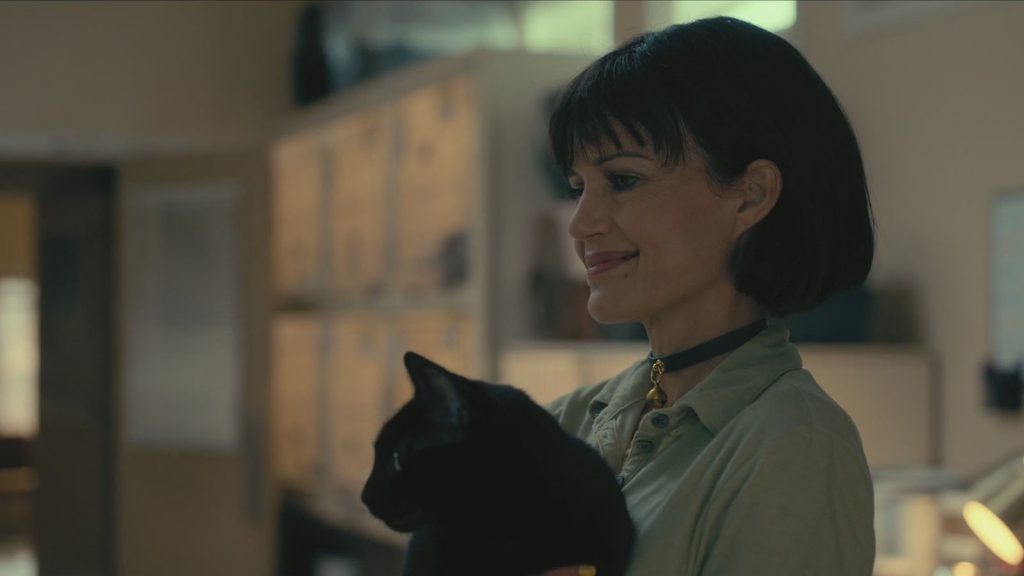
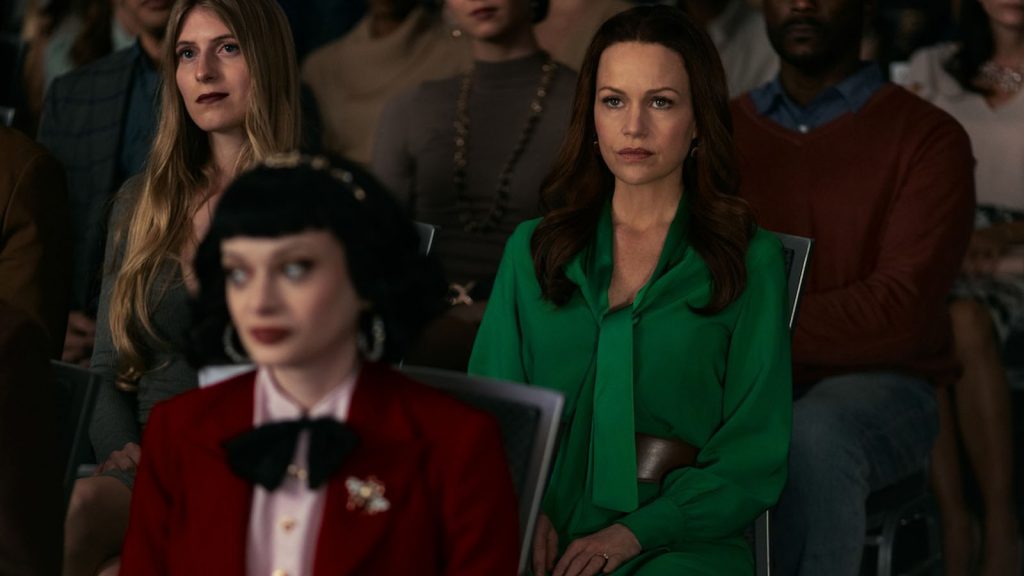

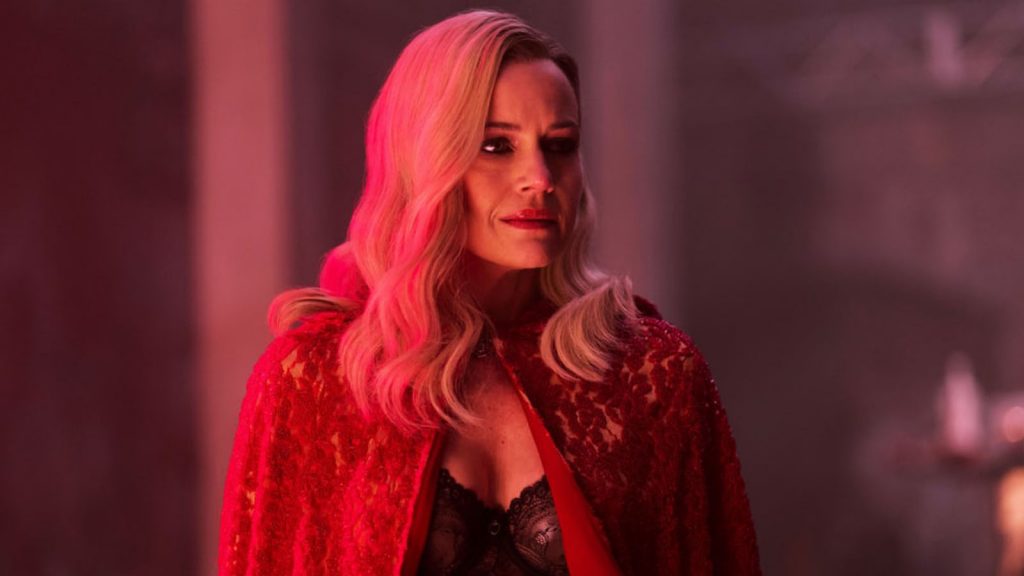
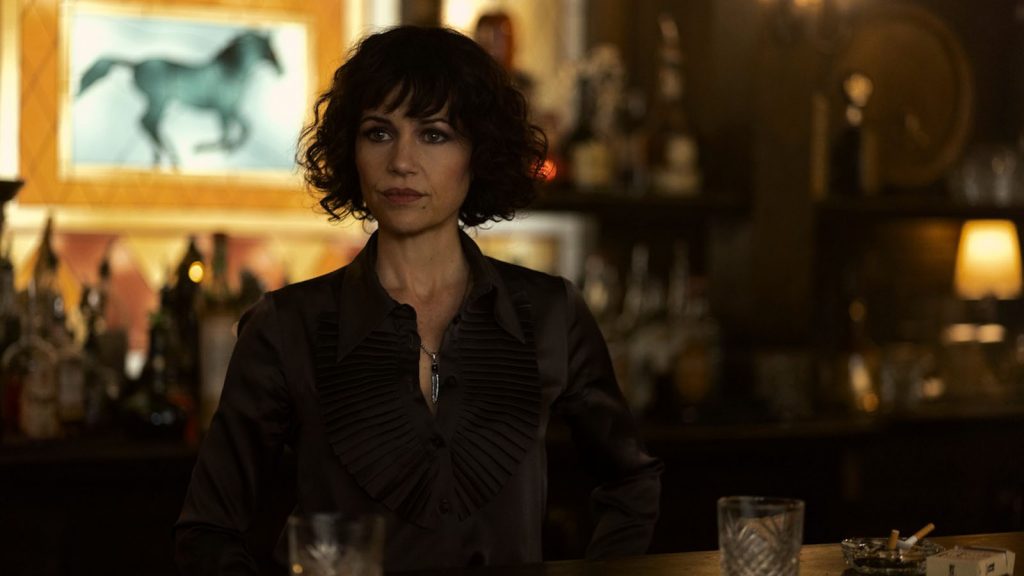


Who was your favorite Verna? Mine was the animal-shelter worker…
It’s amazing that you say that because I’ve gotten a lot of favorites from people, but that’s my favorite, too! It’s not the most popular one; I think people dig her, but she’s not the most flashy. I’ve also found that I love her so much because she just finds human beings kind of insufferable and animals are far superior.
Which one do people more often say?
We don’t have a name for her that anyone would know—of course, I named them all—but people talk a lot about the blonde because she’s so mysterious and strange. A lot of people get fulfillment in Henry Thomas’s character’s death, so that Verna often ends up their favorite.
Speaking of Henry Thomas, he is part of this stock company that Flanagan has assembled that includes yourself, Flanagan’s wife Kate Siegel, Oliver Jackson-Cohen, and Rahul Kohli. It may be unfair to ask who is your “favorite,” but what are the transformative or surprising things your frequent co-stars bring out in you?
The people I’ve acted with the most are Henry and Kate. Kate and I had so much fun in the whole ape sequence [in Usher]. After we finished those takes, I looked at Michael [Fimognari], because he was directing that particular episode, and I was like, “You now have blackmail footage of me.” [Laughs] And then, Henry and I have gotten to play such different incarnations of relationships, so that’s really, really fun. What’s so unusual and exciting is because Mike does have a musicality—such a specific voice and language—it does feel like there is an orchestra and we get to play different instruments each time.
With The Haunting of Bly Manor, he had said very early on that there were a couple of roles that he thought I might be interested in. Then, there was a scheduling conflict where I was filming something else, so I suggested, well, I could pop in and play with you for a moment, and then he ended up proposing that I play the older version of Jamie. It was only going to be the very beginning and the end, and then, he came back and said, “I actually want you to be the narrator of the whole show.” But that was one I literally filmed on for four days total. So again, I got to play a different instrument, more in the background.
It’s just an exciting moment when you get to read a new script with all of these different characters and then realize that at least half of the people you will have already gotten to act with. You kind of just get to jump off the creative cliff together, knowing that you are all trying for the same thing.
People speak all the time about weird things happening to them on the sets of horror films, which makes sense to me, emotionally and psychologically given the material. In horror, space is so important because ghosts are so often confined to particular locations. You have these iconic spaces like the red room or even, the bedroom in Gerald’s Game, which is a really fraught site of violence for that character. Did you ever feel like that, whether emotionally or—if you believe in that—even paranormally on the set of any of these productions?
I will say that in The Haunting of Hill House, the episode where it’s the one long take, that was really crazy, walking through the sound stages [Episode Six: “Two Storms”] to get to the house from the funeral. Because we were doing it in real time, it did feel extremely charged, in a sort of heightened-reality kind of way that felt eerie. That entire house was built on a stage. We kept saying we’re gonna have a sleepover, but then we were all too scared! [Laughs] And then also while I was shooting Hill House, I think because it was such a long shoot and Olivia was so affected and sensitive as a character, I had to always keep her on the backburner on a slow simmer. And so, I really did in Atlanta in my apartment feel a couple of times honestly like it was haunted. And I thought, is this Olivia? I’m not Method, but is this somehow that influence? But then I found out that the building that I was in had been a police station for many, many years and then was abandoned and many things happened in that building. So I think it’s sort of unrealistic to think that there aren’t ghosts: there are a lot of people on this planet, eventually everybody goes, and sometimes people don’t want to go! They don’t want to leave their space. So it seems to me more crazy to think there isn’t any of that.

has a PhD in horror cinema and her work has been published in Film Comment, Reverse Shot, and MUBI Notebook, among others.
I say “hello” into a telephone and Chucky says “hi” back. I realize that I perhaps haven’t adequately prepared myself for what this might feel like. He clears his voice and I clear mine. In that stillness, the panic passes.
BY FRANK FALISI | September 3, 2024
Lucile Hadžihalilović has an exquisite talent for exploring the unique, manic hells that flow forth from helicopter parenting. That particular euphemism, however, is perhaps a bit too polite...
BY VIOLET LUCCA | August 12, 2022
Jennifer Reeder is a proudly Chicago-based, truly independent filmmaker with over 25 years of experience in the business.
BY MARGARET BARTON-FUMO | May 10, 2022

This pre-Code offering packs a lot of story into its typically brisk running time, with several plot threads weaving together a (not always successful) tapestry of spooky and criminal doings.
READ MORE >
BY ANN OLSSON | Month 00, 2021
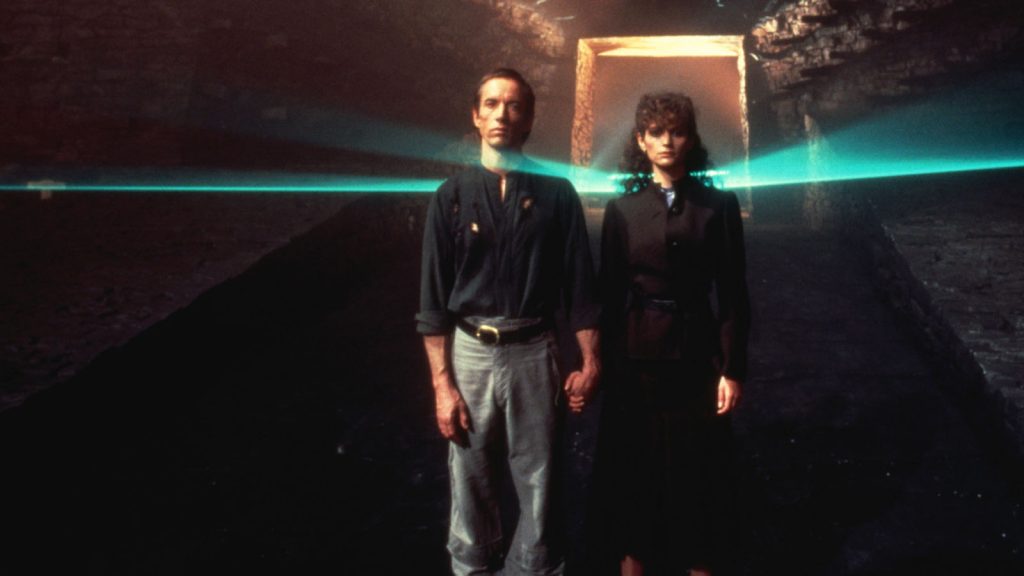
In what could be the fastest-resulting rape revenge movie, a drunken lout brutally forces himself on Ida, the young woman who doesn't return his affections, during a party over Labor Day.
READ MORE >
BY LAURA KERN | Month 00, 2021
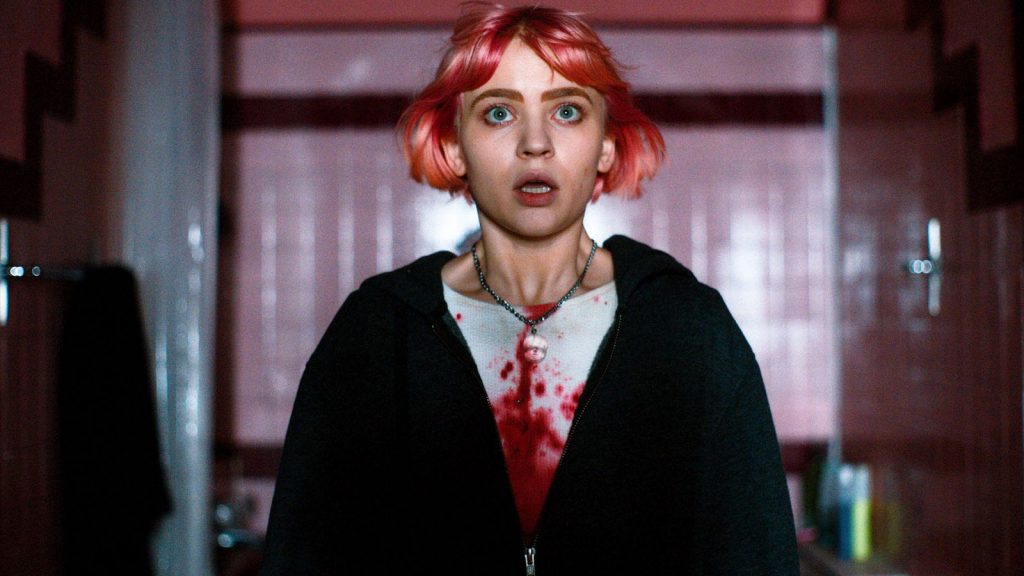
Beast is a lot of movies in one package - fractured fairy tale, belated-coming-of-age story, psychological drama, regional horror film - but above all it's a calling card for its leading lady, Jessie Buckley.
READ MORE >
BY LAURA KERN | Month 00, 2021